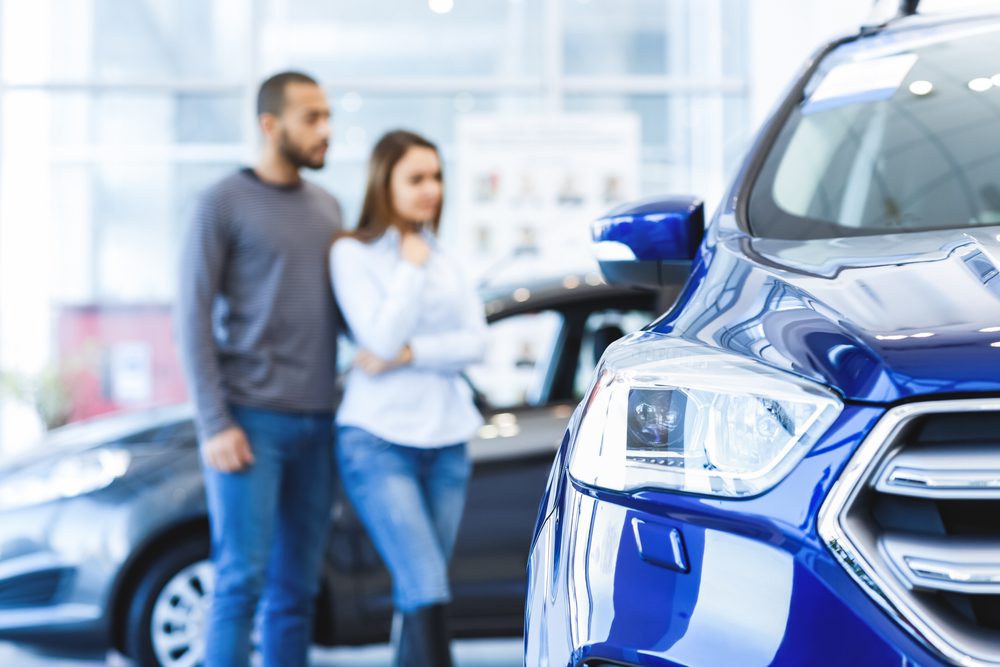There has been much speculation about how the rest of 2018 would shape up when it came to auto sales. Many signs have pointed to the last half of 2018 being a rough one. However, the months leading up to the end of the year have painted a different story. Car sales have seen gains since the middle of 2018 when compared to last year. Automakers and corresponding dealerships have continued to defy expectations, and it looks as if August is no different. Edmunds.com and Cox Automotive predicted a sales increase of 1.2 and 0.2 percent respectively when compared to last year, and it looks as if car sales are meeting these expectations. August has put overall sales in the position to potentially cap at the annualized pace of 16.8 million units. What made August continue the trend of positive growth, and what do dealers need to be aware of as we enter the final months of the year? Take a look at the takeaways from August car sales.
How Did the Large Automakers Fair?
While many analysts were not optimistic about sales results from automakers for August, most came in over expectation. Fiat Chrysler saw a sales increase of 10 percent when compared to last year, and record sales of Jeep and Ram brands contributed to this noticeable increase. Ford saw a 4.1 sales increase —defying expectations—Honda experienced increases of 1.3 percent, and Nissan climbed four percent. General Motors no longer released monthly sales numbers, but they were forecasted to see a decrease of 7.5 percent by Cox Automotive due to General Motor’s short supply of pick-up trucks. However, the story is not favorable for everyone. Toyota dropped two percent while its luxury Lexus brand also saw a decrease of seven percent.
The Routine Record Breaker
Subaru has once again out-shined the competition when it comes to long-term success. Subaru of America reported a 1.4 percent increase over the same time last month with over 64,000 units sold. The company has also experienced a year-to-date sales increase of 5.3 percent when compared to the same amount of time in 2017. This month marks 81 consecutive months of annual month-over-month growth as well as 54 straight months of 40,000+ vehicle sales for Subaru. The automaker has found a winning formula with their relatable marketing and attention to small crossover vehicles. The company’s Impreza and Ascent models are two of the most popular in the brand’s lineup and has led the way in delivering the company’s record-breaking sales for August.
The Long Reign of SUV Sales
August further solidified the seemingly impenetrable popularity of SUVs and Crossovers. Some of August’s car sale success can be traced back to high sales of SUVs. For example, Ford saw a 20 percent increase in SUV sales and an almost six percent rise in pick-up truck units sold. This is big news for a company that is planning to cease the production of most of its smaller passenger vehicles in the next few years. Also, even though it saw a slight decrease, Toyota’s SUV sales rose 8.9 percent, Honda and Nissan saw SUV and Crossover upticks of 19 and four percent respectively. Lower unemployment and high consumer confidence are leading to consumers willing to spend a bit more for a larger car.
New or Used, Prices are Rising
While it may be a bit cheaper to purchase a used car, August revealed that consumers in the market for a used or new vehicle are likely to pay more than they have in the past. According to data by Edmunds, annual percentage rates (APR) and down payments have steadily risen for used vehicles. The APR in August rose 79 percentage points to 8.33 percent, while the average down payment saw a dramatic increase from $121 to $2,601. The average amount financed for a used vehicle is now sitting at a high $21,596. On the other hand, those in the market for new cars are not fairing much better. The average transaction price for a new vehicle hit a new high of $35,541 a $643 increase compared with August 2017. However, some relief could be coming soon as some automakers are expected to offer discounts and incentives for newer SUV models. Consumers are purchasing new cars despite rising transaction and gas prices, however, will discounts and incentives be enough to keep them coming?
Final Thoughts
August definitely had a stronger showing when compared to last year. Much of this is due to the impact of Hurricane Harvey and Irma during the same time in 2017. Results were better than expected for most automakers, and consumer confidence is still on the upswing. SUVs are still the most popular choice, and Subaru continues to stun the competition. While these are promising signs, there is still cause for cautious optimism. As prices and interest rates continue to rise, can consumers keep up with the financial demands? We may find our answer in the last few months of this year.








